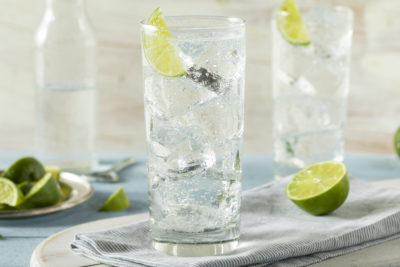
When faced with the task of surviving summer heat, maintaining an ideal body temperature is one of our highest priorities.
When faced with the task of surviving summer heat, maintaining an ideal body temperature is one of our highest priorities. If we look at the “rule of 3s” it’s right there at the top. Our ability to survive without maintaining our core temperature is measured in mere minutes. But when we talk about maintaining our core temperature, we’re normally talking about preventing hypothermia, the loss of body heat.
Hyperthermia, which involves excessive body heat, is just as serious a problem even though it doesn’t get as much press. For those living in hot climates, this is an ongoing battle every summer, especially if they have to work outdoors. As the temperature goes up, the body’s ability to shed excess heat diminishes, creating a situation that can be quite dangerous.
The symptoms of hypothermia and hyperthermia are similar, particularly in how they affect the brain. While you won’t find people shivering from too much body heat, you will find disorientation, weakness, and the loss of the ability to think clearly. As their body temperature rises, they could stop sweating entirely, thereby eliminating that means of cooling their bodies. You’ll even find people who can’t recognize what is happening to them.
Dealing with hyperthermia is serious, but it is certainly still avoidable. A few basic precautions will allow you to work outdoors in the heat without suffering any harm.
Surviving Summer Heat – Tip #1: Take Advantage Of Shade
Anyone who lives in a hot climate understands the true value of shade. It can actually be 5 to 10 degrees cooler in the shade with the right conditions. But more than that, the shade keeps the sunlight from beating down directly on your body and clothing, where it converts to heat. Much of that heat is absorbed directly into your body.
If you don’t have natural shade to work under, create some. If nothing else, use an umbrella, either the portable kind that people use to protect themselves from the rain or the larger ones they use to provide themselves with shade on the beach. Portable, tent-type awnings are even better, giving you an easy way to shade an area that remains big enough to work under.
As you are preparing your home to be a survival shelter, you need to consider providing yourself with a shaded area outdoors where you can work. In some countries, they put the kitchen in such an area outside the home so that the heat that is generated by cooking can escape.
Storing vehicles and tools in the shade is useful too as it keeps them from getting too hot to handle. Nevertheless, if you have a choice between keeping yourself in the shade and keeping your tools in the shade, it’s obviously more important for you to have that shade.
If you are in a hot enough climate, you may want to consider doing your gardening in the shade. I live in the southern tip of Texas where we have lots of sunlight and lots of heat. So, my garden is under 50% shade cloth. That material protects my garden, keeping it slightly cooler as well as sheltering me from the heat when I am working in the garden.
Surviving Summer Heat – Tip #2: Your Clothing And Shade
Wide-brimmed hats are useful for providing shade as well. The Mexican sombrero was developed for this very reason. The wide brim provides ample shade for the wearer. At the same time, people originally wove the sombrero out of straw so that it could breathe. This design allows perspiration from the top of the head to evaporate as well. I prefer a wide-brimmed hat with a mesh crown, as that provides even better ventilation.
Dark-colored clothes should be avoided as they absorb more sunlight, which is then converted to heat. While light-colored clothes become visibly dirty faster, they will help you stay cooler.
Handheld Solar Generator Provides Endless Power In Times Of Need
Surviving Summer Heat – Tip #3: Work In The Cool Of The Day
Genesis chapter three tells us that God walked with Adam “in the cool of the day” (Genesis 3:8). Unless you’ve spent any time living in a hot climate, you might think that this verse refers to the evening. I used to think that too. Nonetheless, when I moved to a hotter part of the country, I discovered that I was wrong. The cool of the day is the early morning before the sun has a chance to warm things up.
The coolest part of any day is just before sunrise. That’s the absolute best time to do any manual labor that you would typically perform when it is hot. In a survival situation, you may want to adjust your schedule so that you are getting up before the roosters to do the hard, physical tasks that you need to accomplish. Then, you can take a siesta during the hot part of the day.
Surviving Summer Heat – Tip #4: Pace Yourself
As you work, the movement of your muscles generates heat. That’s why exercise warms you and your body shivers when it is cold. So, if you have to work when it is hot, you want to pace yourself, taking plenty of breaks to give your body a chance to cool down.
Taking a break doesn’t necessarily mean that you have to stop working altogether. Rather, it can mean alternating between high energy tasks and low energy ones to make more efficient use of your time. Digging a hole to plant a tree or cutting firewood are high energy tasks that will heat you up, but planting and weeding a garden are low energy tasks.
Surviving Summer Heat – Tip #5: Promote Evaporative Cooling
The biggest natural means we have for cooling our bodies is through evaporative cooling. Our bodies sweat so that there is a coating of water over our bodies. That water has to absorb a lot of heat in order to evaporate. It might absorb some of that heat from the surrounding air, but it absorbs most of that heat directly from our bodies, consequently cooling our bodies in the process.
Therefore, sweating is useful to help keep you cool. The type of clothing you wear can help with this. Light-colored, lightweight polyester or some other synthetic fabric are best, as they wick the moisture away from your skin. Cotton, on the other hand, absorbs moisture and traps it against your skin.
Perspiration and a breeze are an ideal combination as the moving air promotes evaporation, therefore cooling you quicker. However, you need to watch out for becoming dehydrated if you are perspiring in the wind. This is because perspiration can evaporate as fast as your body produces it, making it so that you don’t realize how much water you are losing.
Surviving Summer Heat – Tip #6: Drink Plenty Of Fluids
Typically, we hear that you need a gallon of water, per person, per day for drinking and cooking in a survival situation. But if you are in a hot climate, you can easily go through twice as much, if not more. Your body can easily sweat out more than a gallon of water a day if you are working in a

Survive summer heat by drinking plenty of fluids
hot climate. So, be sure to drink plenty of water.
There are some drinks that you should avoid, specifically those with high caffeine or sugar concentrations. Both sugar and caffeine will cause you to work quicker, generating more heat. While sports drinks like Gatorade or Powerade have a fair amount of sugar, they also provide salt and other electrolytes. Even so, drink them in moderation so that you don’t increase your salt level too much.
Surviving Summer Heat – Tip #7: Use External Coolers
Even if you do everything I’ve mentioned above, the heat can cause you problems. Some people don’t perspire normally, which robs them of the best natural cooling they can have. My wife is like this. People with this condition need some sort of external cooling to help their bodies even if air-conditioning isn’t available.
The easiest way of doing this is pouring water over them and soaking their clothing. There were many times in Mexico where I dumped water over my wife because she was overheating. We have since learned better methods.
Using A Cool Collar
The first of these is to use a cool collar. This is a fabric tube with some of the same crystallized gel that people utilize to hold water in the soil for gardening. When the collar is soaked in water, the gel absorbs water, thereby expanding greatly. It is then tied around the neck and worn so that the water trapped in the collar can evaporate, cooling the person wearing it. Since one-fourth of the body’s blood supply passes through the neck, this is a very effective cooling method.
The same thing exists in a larger version, working the same way, but in the form of a vest. These are actually employed fairly commonly by road crews doing construction.
Taking the idea of the cool collar a step further, companies also make similar collars, but with the idea of freezing them once they are filled with water. This step provides a two-stage cooling process with the frozen collar providing more cooling. But then, even when it melts, it still provides cooling.
Using An Ice Vest
There are also ice vests which have pockets where you can insert frozen ice packs. The one my wife has holds ten of the small size blue ice packs, five in front and five in the back. She looks like a terrorist wearing a bomb vest, but it allows her to go out in even the hottest weather without suffering harm. The ice packs last two to three hours, depending on the temperature and her level of activity.
Granted, ice for this vest would not be available during a grid-down crisis, but that’s not the only sort of problem we are preparing for. Keeping my wife healthy even in our day-to-day life is important, so this vest is well worth having.
You may also enjoy reading an additional Off The Grid News article: Air Conditioning Usage Creates Huge Power-Grid Concerns This Summer
Do you have any more tips on surviving summer heat without air conditioning? Let us know in the comments below.
 Off The Grid News Better Ideas For Off The Grid Living
Off The Grid News Better Ideas For Off The Grid Living



